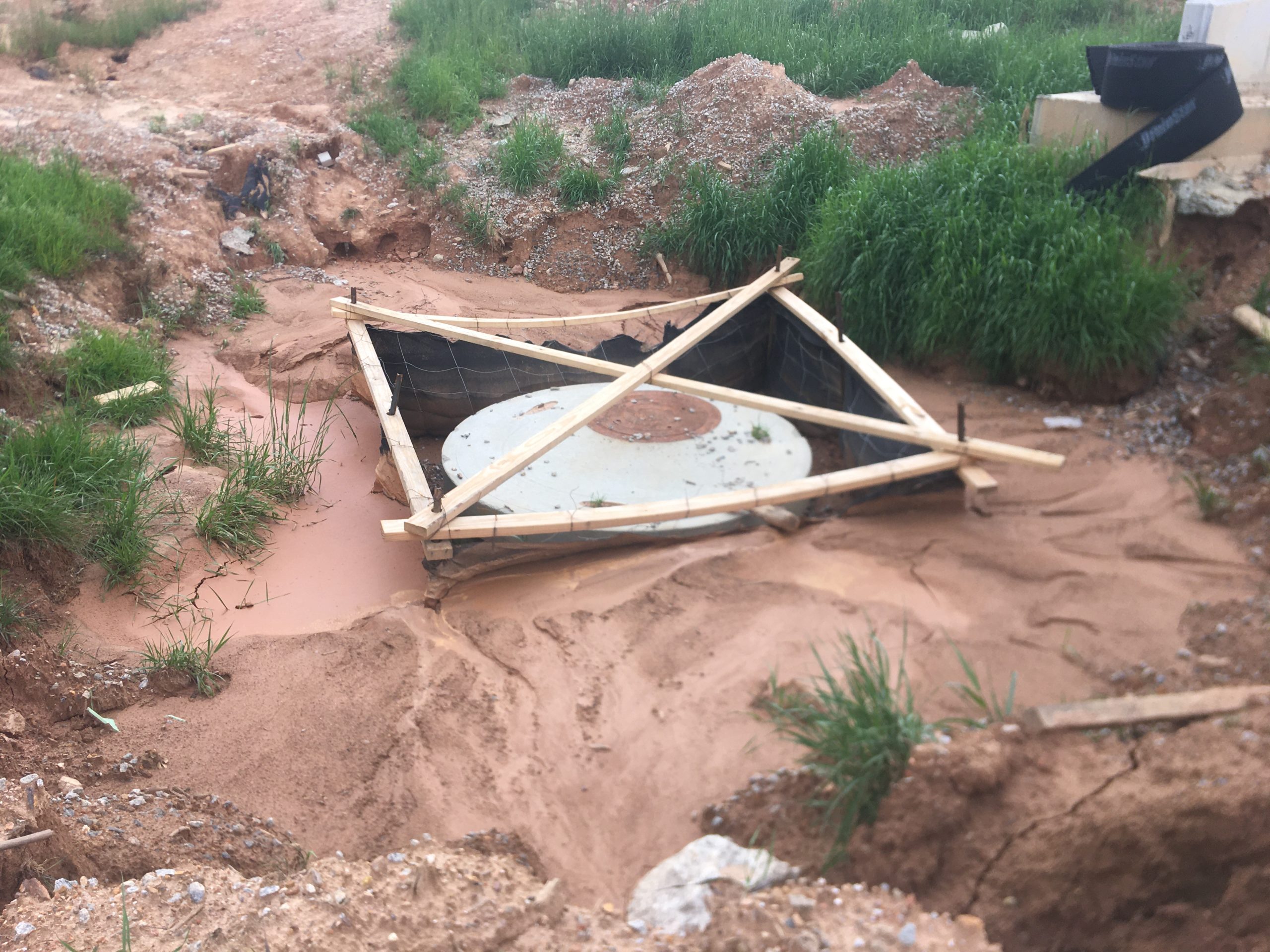Why Inlet Protection?
What Is Inlet Protection (IP)?
The Alabama Department of Transportation describes inlet protection as “a structurally supported barrier placed around a stormwater drop inlet to create ponding which allows coarse sediment to be deposited in the pooled area,” (pg. 285, Alabama Handbook for Erosion Control, Sediment Control and Stormwater Management on Construction Sites and Urban Areas).
Why Is Inlet Protection Important?
IP is specifically designed to stop the ecologically harmful process of sedimentation. Sedimentation is the process of sediments entering into an area’s water system and harming the local water system by filling it with foreign sediments. This often happens at construction sites.
Over sedimentation is extremely harmful to water quality because it impedes the usability of aquatic recreational areas, destroys biological habitat, reduces storage volume of water impoundments, and causes damage to structures located near surface water (Geological Survey of Alabama).
Our water systems are crucial to our communities thriving. Our drinking water, water to sustain our sources of food (crops and livestock), and our local climate all depend on the health of our water systems. So inlet protection is ultimate in its importance.
Inlet Protection Installation?
There are multiple ways that IP’s can be installed. Here we will include those suggested by the Auburn University Erosion and Sediment Control Test Facility.
Silt Fence Inlet Protection
This method uses geotextiles as an underlayment on the compacted surface of the area around the stormwater drain, then builds a simple housing using steel T-posts and 2×4 bracing with a dewatering device. After the housing is built, a geotextile silt fence is installed and secured.
Block and Gravel Inlet Protection
This method similarly uses a geotextile underlayment as its base. Then, however, 8-inch cinder blocks are stacked around the drain area. One of these blocks is turned sideways to act as a “dewatering block.” The dewatering block is placed at the lowest elevation grade surrounding the inlet to allow for maximal drainage from the IP.
After the cinder block and geotextile housing is installed, gravel is placed around the housing to act as the primary filter for the IP.
Sand Bag Inlet Protection
Like the two preceding methods, this method begins with a geotextile underlayment. Then sand bags are positioned tightly around the inlet in a circular manner. The sand bags should be laid in three layers with alternating orientations to the circle (perpendicular and tangential).
Wattle Inlet Protection
As with the other Inlet Protection methods a geotextile is first laid as an underlayment around the inlet. Next, a wattle (interlacing straw) is positioned around the inlet in a circle and is secured with stakes on either side of the circle. Then, to prevent floating, the wattle is stapled to the geotextile on both sides.
When Burns Environmental installs inlet protections you can be assured that we will follow all structural, safety, performance, and maintenance standards. And with an inlet protection installed you can rest assured that your construction site, whether it be commercial or residential, will be a “zero-harm worksite.”

